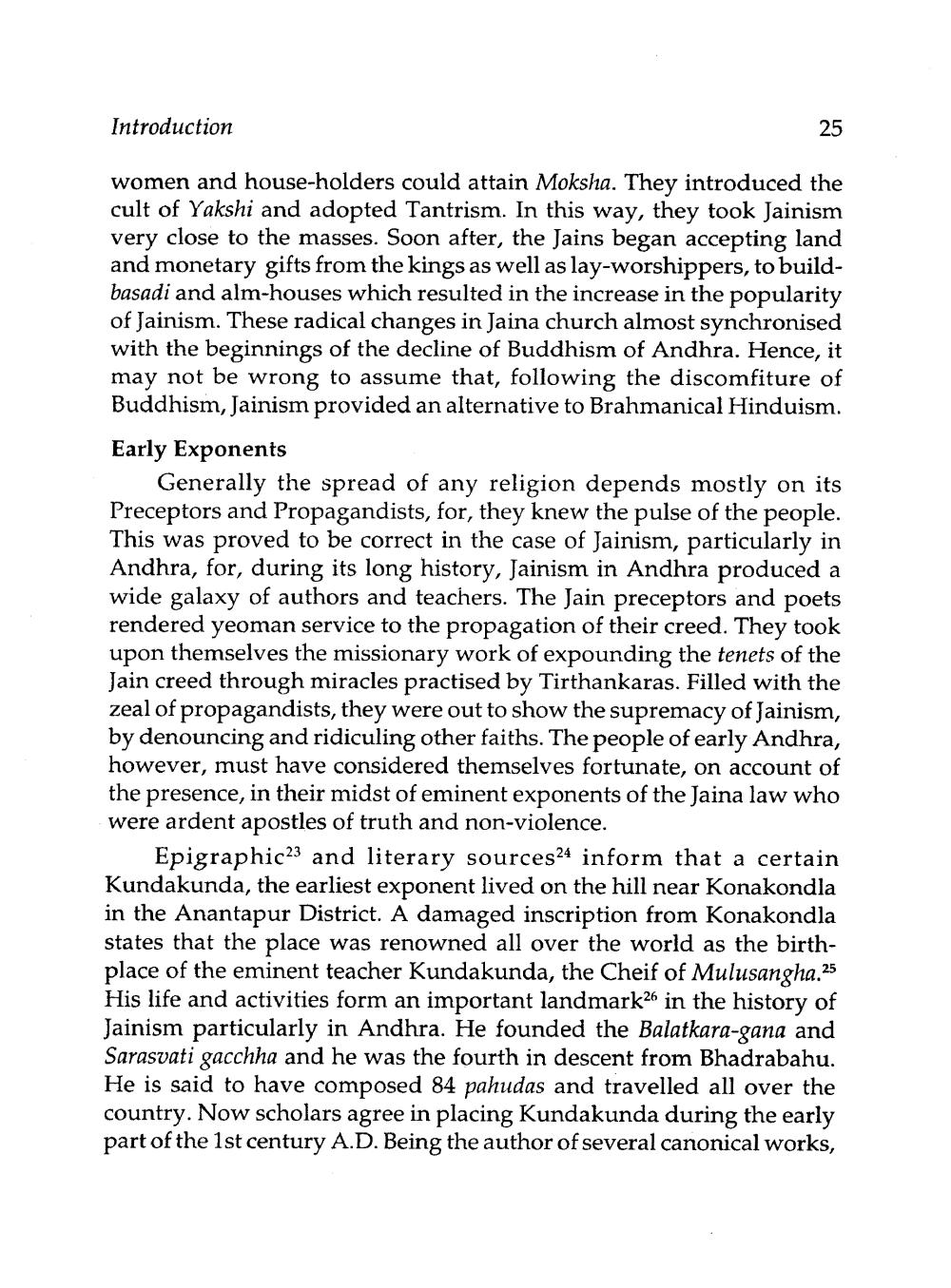________________
Introduction
25
women and house-holders could attain Moksha. They introduced the cult of Yakshi and adopted Tantrism. In this way, they took Jainism very close to the masses. Soon after, the Jains began accepting land and monetary gifts from the kings as well as lay-worshippers, to buildbasadi and alm-houses which resulted in the increase in the popularity of Jainism. These radical changes in Jaina church almost synchronised with the beginnings of the decline of Buddhism of Andhra. Hence, it may not be wrong to assume that, following the discomfiture of Buddhism, Jainism provided an alternative to Brahmanical Hinduism.
Early Exponents
Generally the spread of any religion depends mostly on its Preceptors and Propagandists, for, they knew the pulse of the people. This was proved to be correct in the case of Jainism, particularly in Andhra, for, during its long history, Jainism in Andhra produced a wide galaxy of authors and teachers. The Jain preceptors and poets rendered yeoman service to the propagation of their creed. They took upon themselves the missionary work of expounding the tenets of the Jain creed through miracles practised by Tirthankaras. Filled with the zeal of propagandists, they were out to show the supremacy of Jainism, by denouncing and ridiculing other faiths. The people of early Andhra, however, must have considered themselves fortunate, on account of the presence, in their midst of eminent exponents of the Jaina law who were ardent apostles of truth and non-violence.
Epigraphic23 and literary sources24 inform that a certain Kundakunda, the earliest exponent lived on the hill near Konakondla in the Anantapur District. A damaged inscription from Konakondla states that the place was renowned all over the world as the birthplace of the eminent teacher Kundakunda, the Cheif of Mulusangha.25 His life and activities form an important landmark26 in the history of Jainism particularly in Andhra. He founded the Balatkara-gana and Sarasvati gacchha and he was the fourth in descent from Bhadrabahu. He is said to have composed 84 pahudas and travelled all over the country. Now scholars agree in placing Kundakunda during the early part of the 1st century A.D. Being the author of several canonical works,




